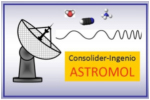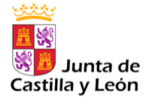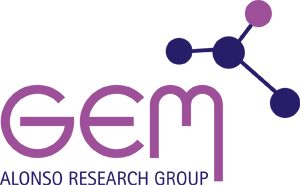European projects
![]()
→ Nanocosmos ERC Synergy Grant n° 610256 –
“Gas and dust from stars to the laboratory: exploring the nanocosmos”
The aim of NANOCOSMOS is to understand the physical and chemical processes leading to the formation of cosmic dust. Astronomical observations and computer modeling by themselves cannot provide a full description of dust formation & processing and its interaction with gas-phase species. The original approach of NANOCOSMOS is to combine astronomical observations at high angular resolution and sensitivity, with modelling supported by top-level laboratory simulations.
The project lies on a synergetic approach between astronomers, vacuum and microwave engineers, molecular and plasma physicists, surface scientists, including both experimentalists and theoreticians, which is the key to provide a cutting-edge view of cosmic dust.
National projects

→ Ministerio de Ciencia e Innovación Grant n° PID2019-111396GB-I00-
“BIOMOLECULES AND MOLECULES OF THE INTERSTELLAR MEDIUM (ISM): Structure, tautomerism, laser-ablation generation and interstellar search (BIOISM)”

→ Ministerio de Ciencia e Innovación Grant n° CTQ2016-76393-P-
“BIOMOLECULAS Y MOLECULAS DEL MEDIO INTERESTELAR: RELACIONES ESTRUCTURA-PROPIEDAD, QUIRALIDAD Y DETECCION EN EL IS”

→ Ministerio de Ciencia e Innovación Grant n° CTQ2013-40717-P-
“Biomolecules and molecules of the interestelar medium: structure, interactions and spectroscopic characterization”

→ Ministerio de Ciencia e Innovación, Programa Consolider Ingenio – 2010 CSD200900038-
“Molecular astrophysics: the Herschel and Alma era”
The aim of this project is to achieve a high degree of synergy between Spanish astrophysicists, chemists and physicists, joining efforts to unveil the physics of molecules of astrophysical interest, with the final goal of preparing sound scientific foundations for the interpretation of the data that ALMA provides.
Regional projects

→ Junta de Castilla y Leon. Subprograma: Programa de apoyo a proyectos de investigación (VA244P20) –
“Laser Ablation Spectroscopic Techniques: From Sweeteners and Building Blocks to Interstellar Molecules”
We have developed in our laboratory laser ablation techniques, coupled with high-resolution Fourier transform microwave spectroscopies, to remove organic solids and to interrogate them in the cold, isolated environment of a supersonic expansion. We address the challenge of exploring the conformational behavior of artificial sweeteners, small di- and tripeptides, steroids as well as other relevant biomolecules to understand the structure-properties relationship. We will make use of LA-MB-FTMW and LA-CP-FTMW high resolution spectroscopic techniques in order to establish possible structure-property relations.
In the field of astrochemistry, rotational spectroscopy, in the microwave and millimeter and submillimeter-wave regions plays a central role allowing the identification of new molecules en el interstellar system (ISM). In collaboration with the astrophysical groups of Max-Planck Institute (Bonn) and NRAO (Virginia, USA), we propose to carry out laboratory investigations on several prebiotic molecules.

→ Junta de Castilla y Leon. Subprograma: Programa de apoyo a proyectos de investigación (VA077U16) –
“Structure-property relation in sweeteners”
The aim of this project is mainly focused on studying natural and artificial sweeteners by LA-MB-FTMW and LA-CP-FTMW high resolution spectroscopic techniques in order to establish possible structure-property relations.
The food industry is currently looking to design tasty new substances, not only maintaining a sweet taste but also avoiding undesirable health effects. Thus, Helios S.A., one of the companies leading the food sector in Spain, is presently collaborating with our group through this project.

→ Junta de Castilla y Leon. Subprograma: Programa de apoyo a proyectos de investigación (VA175U13) –
“Caracterización de fármacos y estupefacientes mediante ablación láser y espectrometría de masas”
All our work has been published in high prestige scientific journals. You can consult them in “Comunications”.

